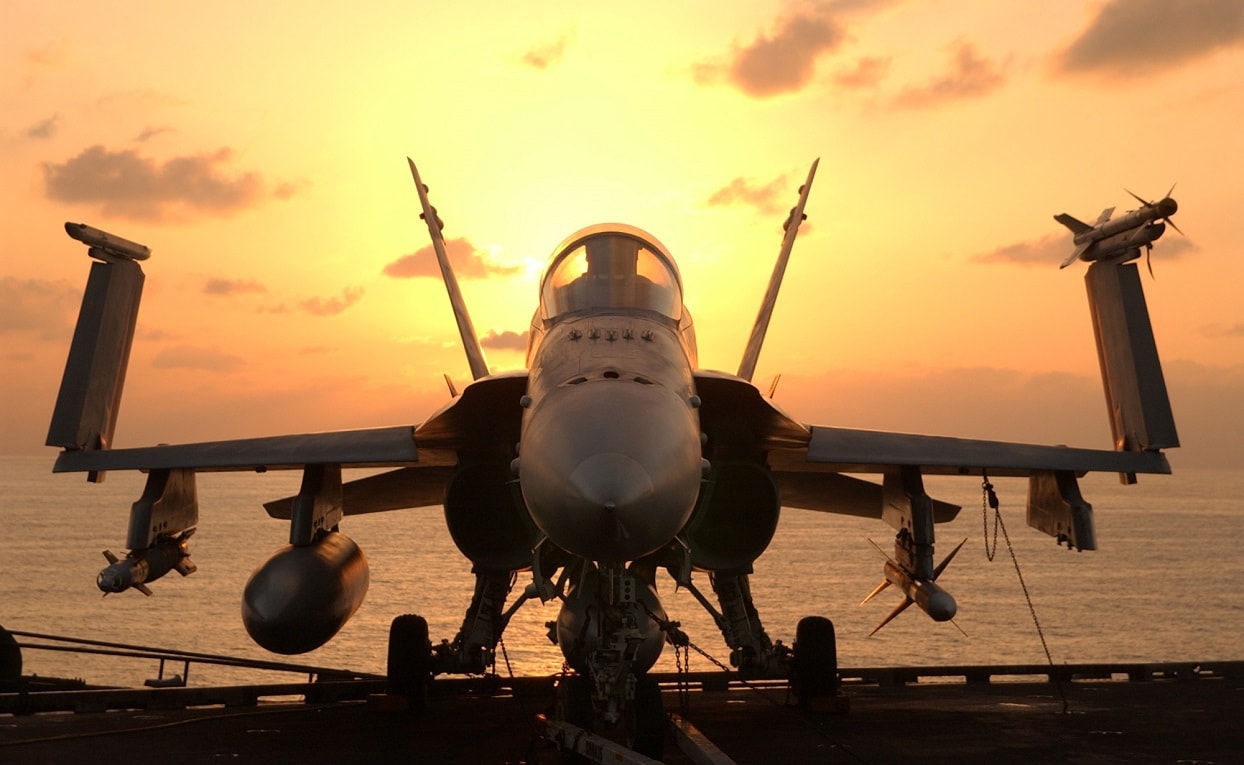Why Russia Would Attack US Navy Aircraft Carriers in a War: During the Cold War, despite having the world’s largest navy, the Soviet Union was still primarily a land power and as a result, the United States Navy’s vast carrier fleet posed a serious threat. Modern warships were seen to be a flexible and powerful weapon that could operate at the peripheries of Soviet power. U.S. and allied carriers – including those of the UK and Australia – could support land operations and even launch nuclear strikes. The Soviets especially feared a multi-carrier surge into the Norwegian Sea, which could have allowed aircraft to strike targets across the northwestern USSR.
As a result, the Soviets knew that in the event of war it would be necessary to take out America’s carriers as quickly as possible.
Today, the Russian Navy is significantly smaller than the old Soviet Navy, and many of its vessels are antiquated. Even as there are efforts to modernize its fleet, the Russians see the necessity to strike hard and fast at an adversary’s carriers, and during its recent drills in the Pacific the Russian Navy was conducting practice runs for just such a situation a few months ago.
“The Pacific Fleet’s ships and vessels have completed their deployment in the area of an operational exercise and have started accomplishing tasks today under the scenario of tactical maneuvers as part of the Pacific Fleet’s distant maritime zone taskforce,” Commander of the Pacific Fleet’s Primorye Flotilla of All-Arms Forces Rear Admiral Konstantin Kabantsov told Tass a few months ago.
The Russian flotilla, which was taking part in the largest naval exercise in the Pacific since the end of the Cold War a few months back, included warships from the Pacific Fleet that comprised of anti-submarine warfare (ASW) ship Admiral Panteleyev, the frigate Marshal Shaposhnikov, the corvettes Gromky, Sovershenniy and Hero of the Russian Federation Aldar Tsydenzhapov. Russian aircraft including Ka-27PL ASW helicopters and Tu-142MZ, an upgraded version of the Cold War-era Tu-95, were also deployed to take part in the naval and air exercises.
As part of the drills, the Pacific Fleet’s forces practiced command and control of a combined-arms task force in operations at considerable distances from naval bases, Russia’s Defense Ministry said in a statement.
Additionally, the Russian flotilla conducted attacks on a notional aircraft carrier strike group. According to the Defense Ministry, “Two detachments of ships, operating at a distance of about 2.5 thousand miles southeast of the Kuril ridge islands, worked out the tasks of detecting, countering and delivering missile strikes against an aircraft carrier strike group of a mock enemy.”
During the simulated attack, a missile strike was carried out by the frigate Marshal Shaposhnikov and the Russian corvettes, while a Russian submarine and Tu-142M3 – the upgraded version of the Cold War Tu-95 (NATO Reporting name “Bear”) – were also involved in the joint actions. The aircraft, which covered about 10,000 kilometers and spent more than fourteen hours in the air, were escorted by MiG-31BM high-altitude interceptor fighters from the Pacific Fleet.
The naval group worked in cooperation with the naval aviation units to deliver the simulated strike with cruise missiles.
The ministry also announced that as part of that exercise, “the naval aviation of the Pacific Fleet also solved the problems of searching for and tracking the submarines of the imaginary enemy. To this end, over the waters of the Sea of Okhotsk and the Pacific Ocean, six Il-38 and Il-38N anti-submarine aircraft of the mixed aviation regiment of the Troops and Forces in the North-East of Russia were involved in pairs. The search for submarines was carried out using standard onboard and dropped hydroacoustic search devices. Each of the anti-submarine aircraft spent at least eight hours in the air.”
After successfully completing the tasks, all aircraft returned safely to their home airfields, the ministry added.
The close proximity of the Russian bombers to Hawaii prompted the United States Air Force to scramble multiple Lockheed Martin F-22 Raptor fighters from Joint Base Pearl Harbor-Hickham, Hawaii as part of an “irregular air patrol.” A KC-135 Stratotanker was also deployed as part of the Air Force’s response.
Peter Suciu is a defense and national security writer who has contributed to more than four dozen magazines, newspapers, and websites. He regularly writes about military small arms and is the author of several books on military headgear including A Gallery of Military Headdress, which is available on Amazon.com.

